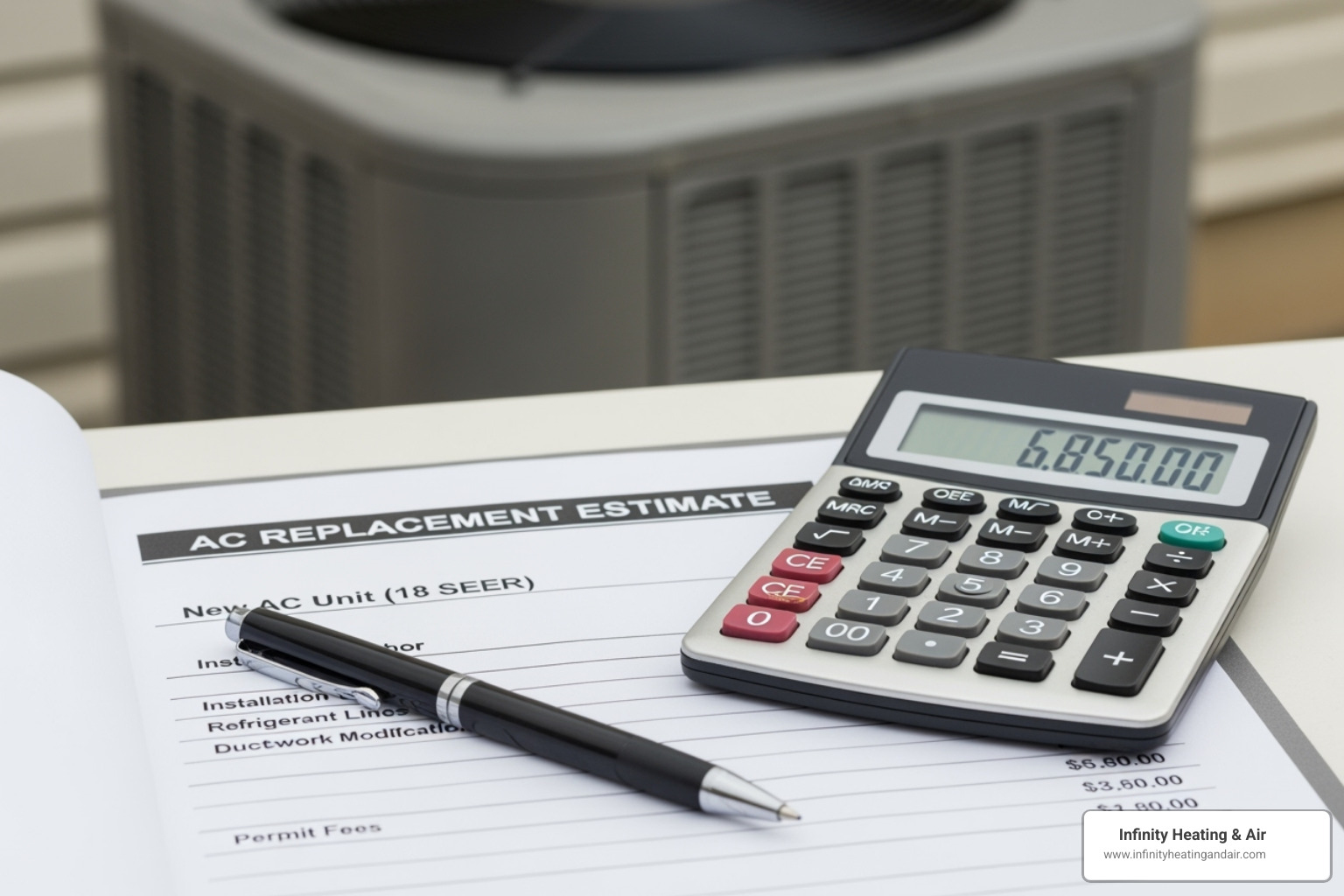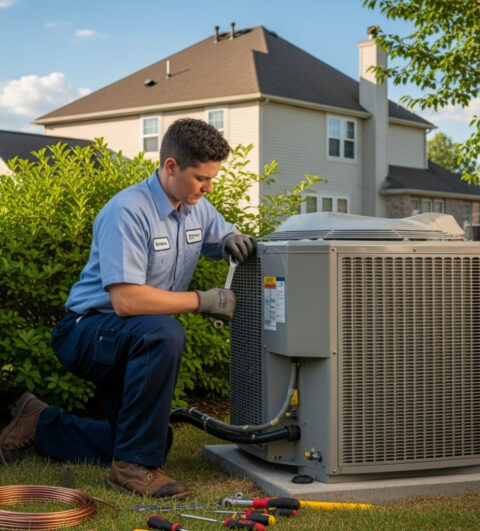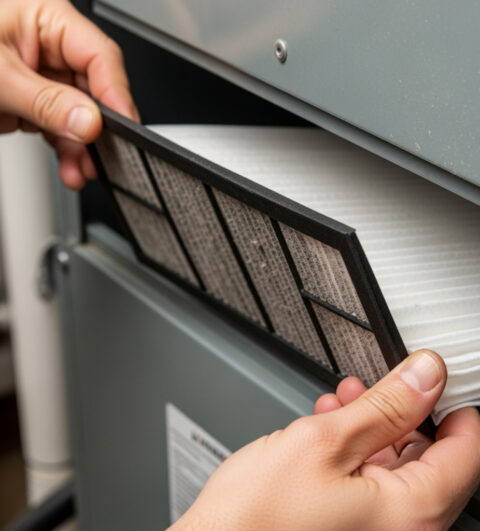Budgeting for a new AC? Get your AC replacement estimate, understand costs, and find smart savings in our homeowner's guide.
Why Getting an Accurate AC Replacement Estimate Matters
When your AC struggles to cool your Northwest Washington home, a proper AC replacement estimate is crucial for making smart financial decisions. Here’s what you need to know:
Key factors that influence your AC replacement estimate:
- System type – Central air, ductless mini-splits, or heat pumps
- Unit size – Proper tonnage based on your home’s square footage and insulation
- Efficiency rating – SEER ratings from 13 to 22+ affect both upfront and long-term costs
- Installation complexity – Ductwork modifications, electrical upgrades, permits
- Labor and materials – Professional installation, disposal of old unit, warranties
This process is about more than replacing a broken unit; it’s about designing comfort for your family. Modern AC technology has advanced significantly, offering better humidity control and energy efficiency than older systems.
As one HVAC professional noted: “The decision to replace your air conditioner can be on par with the decision to renovate your home or buy a car.” Understanding the variables in your estimate helps you choose wisely for your home and budget.
Getting detailed quotes from licensed contractors ensures you compare true value, not just bottom-line prices. A comprehensive estimate includes everything from permits to cleanup, giving you a full picture of your investment.
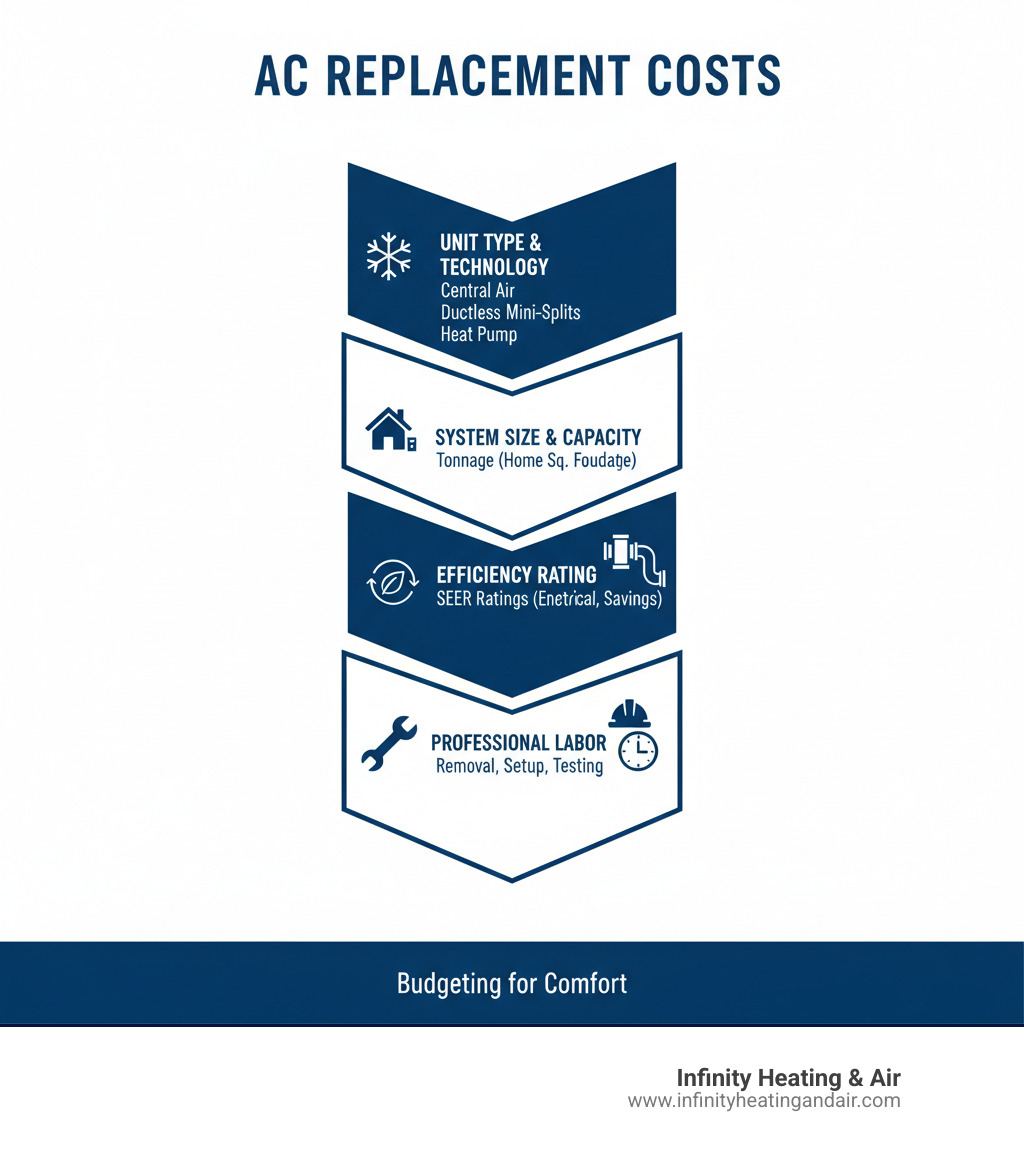
Repair or Replace? Key Signs It’s Time for a New AC
Every Northwest Washington homeowner eventually faces a tough decision: repair your old AC again or replace it? The answer isn’t always obvious without looking at the bigger picture.
System age tells the most honest story. A quality AC can last 12-15 years with proper care, but after 10 years, parts get scarce and simple fixes become expensive. Your AC may still cool, but it’s working much harder.
Frequent breakdowns are your AC’s way of waving a white flag. If your repair technician is a frequent visitor, your system is sending a message. Each repair is a temporary fix, not a solution for the underlying wear and tear.
Those rising energy bills aren’t just inflation. Older systems lose efficiency and work overtime, raising your utility bills. If your cooling habits are the same but bills are climbing, your AC is likely the culprit.
Inconsistent temperatures throughout your home create frustration. If your living room is an icebox while the bedroom is stuffy, your system can’t distribute air evenly. This inconsistency signals a problem.
Strange noises deserve immediate attention. Your AC should hum quietly, not grind, squeal, or bang. These noises often signal failing major components like motors or compressors, which are expensive to replace.
Poor air quality affects your family’s health. More dust, increased allergy symptoms, or stale air can mean your aging system is circulating pollutants along with cool air.
The R-22 refrigerant phase-out creates a challenge for older systems. This refrigerant is being phased out, making it expensive and hard to find. A refrigerant leak in an older unit can be so costly to fix that replacement becomes the smarter financial choice.
When weighing repair versus replacement for your AC replacement estimate, consider the whole picture. While a repair can make sense, the benefits of a new, efficient system often outweigh the costs of maintaining an old one.
For situations where repair might still be the right choice, you can learn more about our AC repair services to explore your options.
| Feature | Repair | Replace |
|---|---|---|
| Unit Age | Typically under 10 years | Generally 10+ years |
| Repair Freq. | Infrequent, minor issues | Frequent, major breakdowns |
| Energy Costs | Stable or slight increase | Noticeably rising |
| Efficiency | Original (potentially depreciated) | Significantly improved, higher SEER ratings |
| Comfort | Consistent | Inconsistent temperatures, poor humidity control |
| Air Quality | Good | Poor, dusty, stale |
| Refrigerant | R-410A or newer | R-22 (phasing out, expensive) |
| Investment | Short-term fix | Long-term solution, increased home value |
Deconstructing Your AC Replacement Estimate: Key Influencing Factors
An AC replacement estimate can seem like a mysterious collection of technical terms. However, every line item tells a story about your home’s comfort needs. Let’s break down what goes into your estimate.
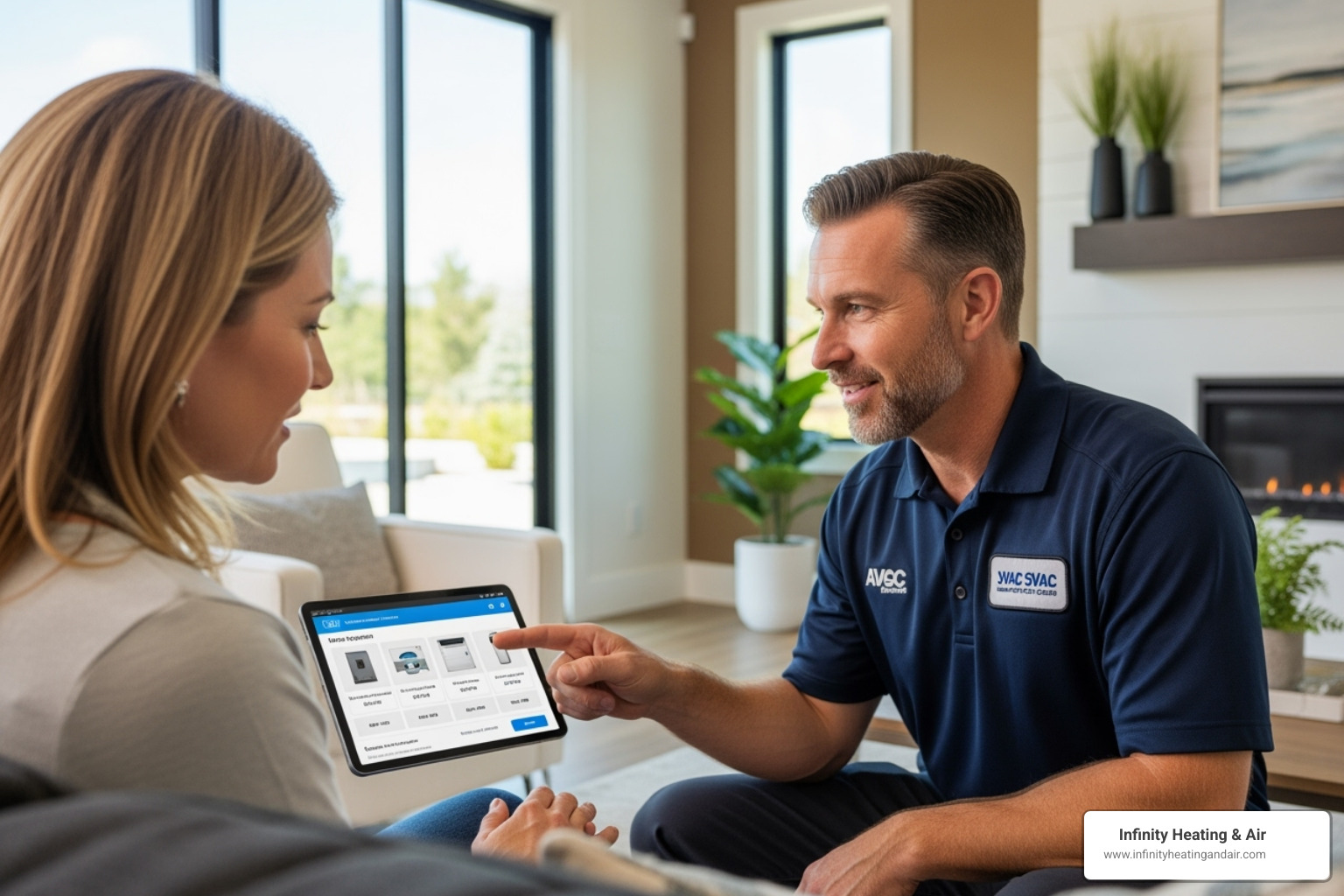
Think of your estimate as a custom blueprint for comfort. No two homes are alike, so no two estimates should be. We consider your home’s structure and your family’s lifestyle to create a unique solution. Your home’s specific needs, like a hot room or high humidity, influence our recommendations. Understanding your quote means seeing how each component solves these real-life challenges.
System Type and Technology
The heart of any AC replacement estimate starts with choosing the right system type. It’s like picking the right vehicle for your commute—you want an efficient fit for your lifestyle.
Central air conditioners use existing ductwork to cool your entire house. If you have ducts, central air is often the most sensible, reliable, and effective option for consistent temperature.
Ductless mini-split systems are game-changers for homes without ductwork. These systems connect indoor units to an outdoor compressor, avoiding the need for extensive construction. They’re also great for creating temperature zones, allowing for different comfort levels in different rooms.
Heat pumps are the multitaskers of the HVAC world. They cool in summer and heat in winter, using less energy than traditional systems. They are a smart choice for our mild Northwest Washington winters.
The technology inside these systems also greatly impacts your daily comfort. Single-stage units run at full power until the set temperature is reached, then shut off. While straightforward and budget-friendly, they can’t adjust to subtle comfort changes. Two-stage units mostly run at a lower, efficient speed, ramping up only when it’s very hot. This provides better temperature and humidity control. Variable-speed technology is the most impressive, adjusting output in tiny increments to match conditions perfectly. They are quiet, maintain precise temperatures, and excel at humidity control, providing steady comfort.
Sizing and Capacity (Tonnage)
Many homeowners fall for the “bigger is better” myth, but proper sizing is critical for your new system’s performance and a major factor in your AC replacement estimate. AC capacity is measured in tons, with most homes requiring 1.5 to 5 tons.
To get this right, we perform a Manual J load calculation. This isn’t guesswork; it’s a detailed analysis that starts with your home’s square footage and also analyzes insulation levels, window quality (number, direction, efficiency), our local climate, ceiling heights, occupancy, and heat-generating appliances.
An oversized unit short-cycles, wasting energy, failing to dehumidify, and causing premature wear. An undersized unit runs constantly, struggling to cool your home and wasting energy.
Efficiency Ratings and Long-Term Value
Efficiency in your AC replacement estimate means how much comfort you get per dollar spent on electricity. The SEER rating (Seasonal Energy Efficiency Ratio) measures this performance. Think of SEER like gas mileage for your car: a higher rating means more cooling for less electricity. You can learn more about how these ratings work at this helpful resource: What is a SEER rating?
Higher efficiency benefits show up in lower utility bills. While the upfront investment for high-efficiency systems is larger, the lifetime savings can be substantial. Energy Star certified systems meet strict efficiency guidelines, giving you confidence that your new system will deliver real energy savings.
Additional System Modifications
Your AC replacement estimate isn’t just for the new unit. It often includes modifications to ensure the whole system works perfectly.
An existing ductwork assessment is crucial. An efficient AC is wasted on leaky or poorly sized ducts. We may recommend duct sealing or replacement to prevent energy loss and ensure proper airflow.
Electrical panel upgrades may be necessary for modern high-efficiency units to operate safely and reliably. New thermostat wiring may be needed for smart controls. Properly protecting and sealing the refrigerant line set improves efficiency and extends system life.
Finally, local permits and inspections are important safeguards for your investment and your family’s safety.
Smart Strategies for a Cost-Effective AC Replacement
Replacing your AC doesn’t have to break the bank. With smart planning, your AC replacement estimate can lead to years of comfort and energy savings.

Think of AC replacement as an investment in your home’s comfort and value. The key is strategic timing, using available incentives, and getting a comprehensive estimate.
Timing Your Replacement for Optimal Value
A key secret to saving money and stress is to replace your AC before you desperately need it. Shoulder seasons—spring and fall—are your sweet spot. During these quieter months, HVAC contractors have better availability and can give your project more attention.
Planning ahead means you can take your time researching options and making a thoughtful decision. When your AC dies in July, it’s hard to think clearly about long-term options like efficiency ratings and warranties.
Avoiding emergency replacements keeps you in control. Emergencies often lead to limited contractor availability, rushed decisions, and higher costs. When you’re desperate for cool air, any option can seem like a good deal, even if it’s not the best long-term value.
Open uping Savings with Rebates and Incentives
Many programs exist to help offset the cost of energy-efficient upgrades. These savings can significantly reduce your final AC replacement estimate.
- Federal tax credits are periodically available for high-efficiency equipment. These programs change annually, so check for current availability.
- State and local rebates in Washington can vary by region but offer incentives for efficient home improvements.
- Utility provider programs are often generous. Many local utilities offer rebates for efficient systems, especially heat pumps, to help reduce peak energy demand.
The easiest way to find what’s available is through the Energy Star rebate finder: Find local incentives via the Energy Star guide. We stay current on local programs and can guide you through the application process.
How to Get a Comprehensive AC Replacement Estimate
A valuable AC replacement estimate is more than a price. The goal is to understand your investment and feel confident in your decision.
Finding a licensed contractor is your first step. In Northwest Washington, verify the contractor’s license, bonding, and insurance. This protects you and ensures the work meets professional standards.
The importance of in-home consultations cannot be overstated. An accurate estimate requires an in-home consultation. We need to see your current system, ductwork, and electrical setup to understand your home’s unique needs, perform load calculations, and identify necessary modifications.
What a detailed quote includes is critical. A detailed quote should include unit specifications, labor, materials, modifications, permits, warranties, and old unit disposal.
Comparing proposals, not just prices, is key. Look beyond the bottom line. Compare system efficiency, warranty coverage, and installation thoroughness. A slightly higher upfront cost can lead to better long-term value through lower bills, fewer repairs, and greater comfort.
The AC Replacement Process: What to Expect
Replacing an AC unit might seem daunting, but with experienced professionals, it’s a smooth process. We keep you informed every step of the way so you know what to expect during your AC replacement.
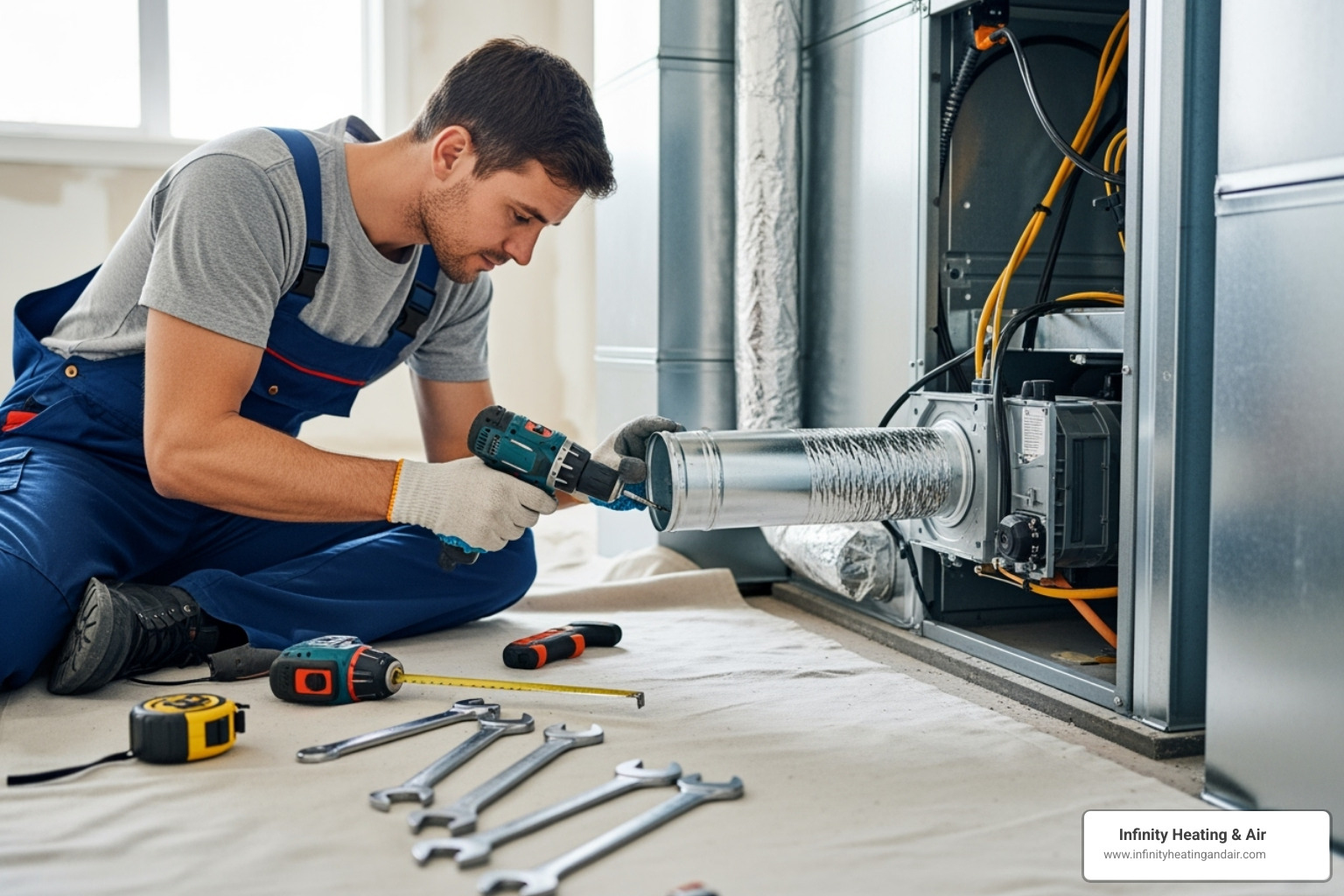
From Consultation to Cool Air
Our process is seamless, from your first call to enjoying cool air.
- Initial In-Home Assessment: Our technicians visit your Northwest Washington home for a comprehensive evaluation. We inspect your current system, ductwork, and electrical setup, and perform a Manual J load calculation. This gathers the information for your personalized AC replacement estimate.
- System Design and Selection: Based on our assessment, we’ll present suitable AC systems, explaining the pros and cons of each (efficiency, technology, features). We help you choose a system that fits your budget and comfort goals.
- Scheduling the Installation: We’ll schedule the installation at a convenient time to minimize disruption.
- Old Unit Removal: On installation day, our team will carefully remove and responsibly dispose of your old AC unit, protecting your home in the process.
- Professional Installation: Our certified technicians install your new units, connect refrigerant and electrical lines, and ensure everything is up to code. This includes any necessary modifications discussed previously. We ensure every connection is secure for optimal performance.
- System Testing and Calibration: We rigorously test and calibrate the new unit for peak efficiency and proper airflow. This includes checking refrigerant levels, electrical connections, and overall performance.
- Final Walkthrough: We’ll walk you through your new system, explain its features and thermostat operation, and answer your questions. We’ll also provide maintenance tips to help you get the most from your investment and maintain your home’s comfort.
Frequently Asked Questions about AC Replacement
Replacing your AC isn’t an everyday task, so it’s natural to have questions. Here are answers to the most common questions we hear from Northwest Washington homeowners.
How long does a typical AC replacement take?
Most standard replacements are completed in one day. This applies to straightforward swaps using existing ductwork and electrical. Our team works efficiently to restore your comfort by evening.
More complex installations, such as those with extensive ductwork modifications, electrical upgrades, or a system type change (like to a ductless mini-split), may take two days. We provide a realistic timeline during your consultation to avoid surprises.
How long do new air conditioners last?
With proper installation and regular maintenance, a new AC unit typically lasts 12-15 years. Well-maintained, high-quality systems can last up to 20 years.
The key is proper care, much like a car needs regular tune-ups. The quality of the initial installation is also crucial for a long service life. Regular maintenance, like changing filters and scheduling annual tune-ups, adds years to your system’s life. To protect your investment, learn about our maintenance plans.
What are the main benefits of installing a new, energy-efficient AC?
A new, energy-efficient system provides numerous benefits, starting with lower monthly energy bills. High-SEER units use far less electricity, which makes a noticeable difference on your summer utility bills in Northwest Washington.
Beyond savings, you’ll enjoy improved indoor comfort and humidity control. Newer systems, especially two-stage and variable-speed models, maintain consistent temperatures, eliminating hot spots and that clammy feeling from humidity.
Better indoor air quality is another key benefit. New systems often feature advanced filtration to remove allergens and pollutants, which is ideal for family members with allergies or respiratory issues.
You’ll also appreciate the quieter operation. Modern AC systems are engineered to run almost silently, unlike older, clanking units.
Finally, a new, efficient HVAC system increases your home’s resale value. It’s a major selling point for buyers and an improvement that can pay you back.
Conclusion: Investing in Your Home’s Endless Comfort
Replacing your air conditioner is more than fixing a broken appliance; it’s a thoughtful investment in your family’s comfort, your home’s energy efficiency, and your long-term peace of mind.
The quality of your indoor environment impacts your well-being, especially during warm Northwest Washington summers. A new, properly sized and efficient AC transforms your home into a sanctuary from the heat and humidity.
This guide has shown how proper system sizing prevents energy waste, higher SEER ratings lead to monthly savings, and modern variable-speed technology creates a perfectly comfortable environment.
At Infinity Heating & Air, we understand true comfort is about crafting an environment for living. Our philosophy of “endless comfort” is reflected in every AC replacement estimate we provide, designing a system to serve your family for the next 15 years.
The importance of professional design and installation is crucial. We prevent the frustration of improperly sized or installed systems by performing detailed Manual J calculations and ensuring all components work together seamlessly.
Your home deserves a cooling system designed for your family’s needs, installed by professionals, and backed by strong warranties that give you confidence.
Ready to take the next step toward a perfectly comfortable home? Get your personalized AC replacement estimate today and find the Infinity Heating & Air difference.

